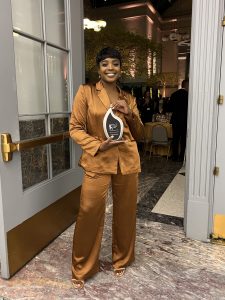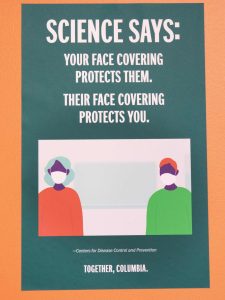Chicago’s Blue Cart recycling program has improved recycling rates in the seven wards that rolled it out so far. And a four-year state commitment will expand the program that replaces the city’s beleaguered “blue bags.”
An $8 million grant from the Department of Commerce and Economic Opportunity (DCEO) will soon give more Chicagoans a chance to do more recycling, following the lead of the 1st, 5th, 8th, 19th, 37th 46th and 47th wards.
But some community leaders and residents say the city could do more to increase recycling.
The Blue Bag program cost the city $60 million just to build the recycling sort centers and even after a decade, recycling totals were still hovering under 10 percent, according to the Chicago Recycling Coalition. This level is far below the 25 percent recycling rate required by the 1998 Illinois Solid Waste Planning and Recycling Act.
“The Blue Cart is much better than the Blue Bag system,” said Marjie Isaacson, a recycling block captain in the 1st Ward’s East Village neighborhood. “People didn’t understand Blue Bag, how you can throw away recyclables with your trash.”
The 8-month-old program provides residents with a blue cart to discard recyclable materials separate from trash; before blue bags full of recyclable materials were tossed into the same bins as the garbage.
If placed in paper or plastic bags next to the carts, the city will also pick up yard waste, such as grass clippings, leaves and weeds, which will then be composted and used as natural fertilizer. This is also a new addition to the city’s recycling efforts.
The new system has showed positive signs.
In the 1st Ward, recycling has increased about 4.1 percent since the program began in June, which topped the list for participating wards. This brings their total rate up about 19.4 percent, according to city officials.
Scott Rappe, Blue Cart participant and member of the East Village Association, is not surprised it is working and believes the initial separation of recyclables from trash has to account for some of its success.
“With the Blue Cart program, 100 percent of materials should be getting recycled,” he said.
Isaacson and Rappe both live in buildings of one to four units, the only buildings that receive garbage and recycling services from the city of Chicago’s Department of Streets and Sanitation that are therefore eligible to participate in the Blue Cart program as part of their normal city garbage pick-up.
To encourage recycling in other wards, the city set up 15 drop-off centers around Chicago and offers some rebates for building owners of more than four units to cover costs associated with private recycling vendors.
But aldermen and community leaders in participating wards say the rebate solution is not clear because of a loophole in city refuse collection services.
“To receive a rebate, you are supposed to show proof that a recycling program is being used,” said Ald. Manny Flores (1st Ward). Now, owners of large buildings “just have to sign an affidavit, but there should be more proof, such as a contract.”
A local ordinance that took effect in 2005 requires all tenants of buildings that use “private waste haulers” be supplied with a written recycling plan, explaining details of the building’s recycling program.
“I am pushing for the city to clear up its language about refuse rebates,” Flores said. “There should be no gray area in this matter.”
Rae Mindoc, pilot program coordinator for the 46th Ward, said “residents in multi-unit buildings started noticing the blue carts and became interested in the program, so they have been contacting the ward office.”
Until recently, these residents in the 46th Ward couldn’t participate since the Blue Cart program is available only for single family homes and buildings up to four units.
With a $40,000 grant from the U.S. Environmental Protection Agency, Ald. Helen Shiller (46th) has been included these larger buildings in the Blue Cart program. Two to three multi-unit buildings have been contacting Shiller’s office each week to become part of the new multi-unit pilot, Mindoc said.
Giving larger buildings and highrises a chance to participate will help the North Side ward that includes Uptown and part of Lakeview recycle more. As of August, the recycling rate for the combined 46th and 47th wards was just under 18 percent, according to city officials.
For the other four participating wards, August recycling rates were about 14 percent for the combined 5th and 8th wards, as well as for the 19th Ward, even with no yard waste, and about 18 percent for the 37th Ward.
Categories:
Citywide Eco & Environment Public West Side
Tags:
1st ward alderman manny flores blue bag blue cart recycling






Be First to Comment